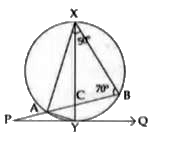Write the formula to find the sum of first n terms of an Arithmetic progression, whose first term is a and the last term is an.Solution in Kannada
The correct Answer is:Sn=n2(a=an) OR Sn=n2+(n−1)d
Step by step video, text & image solution for Write the formula to find the sum of first n terms of an Arithmetic progression, whose first term is a and the last term is a_n. by Maths experts to help you in doubts & scoring excellent marks in Class 10 exams.
Updated on:21/07/2023Topper's Solved these Questions
- ARITHMETIC PROGRESSIONSBOOK - ZEN PUBLICATIONCHAPTER - ARITHMETIC PROGRESSIONSEXERCISE - ZEN ADDITIONAL QUESTIONS (SHORT-ANSWER [SA] TYPE 1 - QUESTIONS)
24 Videos
- ARITHMETIC PROGRESSIONSBOOK - ZEN PUBLICATIONCHAPTER - ARITHMETIC PROGRESSIONSEXERCISE - ZEN ADDITIONAL QUESTIONS (SHORT-ANSWER [SA] TYPE 2 - QUESTIONS)
14 Videos
- ARITHMETIC PROGRESSIONSBOOK - ZEN PUBLICATIONCHAPTER - ARITHMETIC PROGRESSIONSEXERCISE - ZEN ADDITIONAL QUESTIONS (MULTIPLE-CHOICE QUESTIONS [MCQS] )
17 Videos
- AREA RELATED TO CIRCLES BOOK - ZEN PUBLICATIONCHAPTER - AREA RELATED TO CIRCLES EXERCISE - ADDITIONAL QUESTIONS (HIGHER ORDER THINKING SKILLS)
7 Videos
- CIRCLESBOOK - ZEN PUBLICATIONCHAPTER - CIRCLESEXERCISE - ZEN ADDITIONAL QUESTIONS ( HOT [HIGHER ORDER THINKING SKILLS] - QUESTIONS) (IIT AND IMO)
9 Videos
Similar Questions
Write the nth term of the AP:
a] 13,8,3,−2,…..
b] √2,3√2,5√2,…..
c] 121,117,113,…..
d] 34,54,74,….
e] −15,−10,−5,0,….....
View SolutionFind the 12th term from the end of AP 8, 10, 12, ..... , 130
View SolutionThe first nth term of a AP is given by
View SolutionFind the area of the shaded region portion in the given figure if E is the midpoint of AB,AGE and BEF are quadrants, and DOC is a semicircle.

View SolutionIn the adjoining figure, XY is a diameter of the circle and PQ is a tangent to the circle at Y. Given that ⌊AXB=50∘ and ⌊ABX=70∘, calculate ⌊BAY and ⌊APY.

View SolutionThe first term of an arithmetic progression is 1 and the sum of the first nine terms equal to 369. The first and the ninth term of a geometic progression colncide with the first and the ninth term of the arithmetic progression. Find the seventh term of the geometric progression.
View SolutionWrite the formula to find the sum of first n terms of an Arithmetic progression, whose first term is a and the last term is an.
View SolutionThe sum of first 'n' terms of an arithmetic progression is 210 and sum of its first (n-1) terms is 171. If the first term 3, then write the arithmetic progression.
View SolutionWrite the formula to find the sum of first n terms of an Arithmetic progression, whose first term is a and the last term is an.
View SolutionWhat is the sum of the first 17 terms of an arithmetic progression if the first term is -20 and last term is 28?
View SolutionWhat is the sum of the first 9 terms of an arithmetic progression if the first term is 7 and the last term is 55?
View SolutionWhat to the sum of the first 13 terms of an arithmetic progression if the first term to -10 and last term is 26?
View SolutionIn an arithmetic progression of 50 terms, the sum of first ten terms is 210 and the sum of last fifteen terms is 2565. Find the arithmetic progression.
View SolutionIn an arithmetic progression of 50 terms, the sum of first ten terms is 210 and the sum of last fifteen terms is 2565. Find the arithmetic progression.
View SolutionThe first term of an arithmetic progression is 1 and the sum of the first nine terms equal to 369. The first and the ninth term of a geometric progression coincide with the first and the ninth term of the arithmetic progression. Find the seventh term of the geometric progression.
View SolutionThe first term of an arithmetic progression is 1 and the sum of the first nine terms equal to 369. The first and the ninth term of a geometric progression coincide with the first and the ninth term of the arithmetic progression. Find the seventh term of the geometric progression.
View Solution
